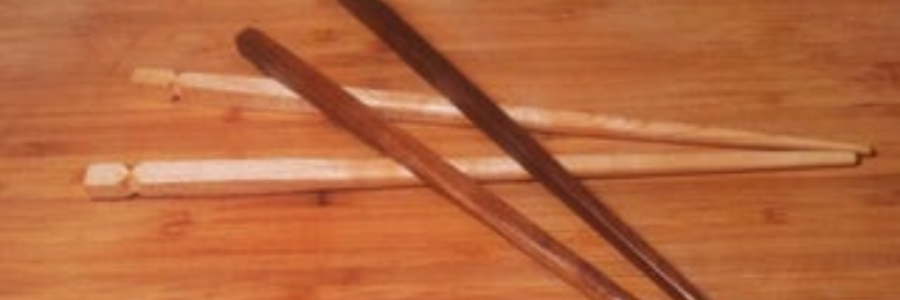This Is Interesting
Chop-A-Chop=A-Stick
Other than our hands, the oldest used utensil isn’t a fork or a spoon.
It’s chopsticks.
Apparently Chinese ancestors were the first who invented chopsticks. They did this by discovering that using two twigs is better for reaching into pots full of hot water or oil, rather than using hands or fingers. The earliest version of Chinese chopsticks were used for cooking about 6,000-9,000 years ago.
When you compare this to the fork (which didn’t hit the scene until the 1500’s), which was considered decadent and blasphemous when it was introduced to Venetian society in the 11th century. Chopsticks, the eating utensils of choice in parts of Asia, have no such scandalous past, although their history is just as interesting.
It was the ancient philosopher and vegetarian Confucius’s disdain for another common utensil, the knife, that may have helped cement the chopsticks’ role as China’s preferred food implement (and ensured countless embarrassing Western date moments in future millennia).
According to the California Academy of Sciences, which houses the Rietz Collection of Food Technology, chopsticks were developed about 5,000 years ago in China. The earliest versions were probably twigs used to retrieve food from cooking pots. When resources became scarce, around 400 BC, crafty chefs figured out how to conserve fuel by cutting food into small pieces so it would cook more quickly. This new method of cooking made it unnecessary to have knives at the dinner table—a practice that also jibed with the non-violent teachings of Confucius, as expressed in one of his numerous quotable quotations:
“The honorable and upright man keeps well away from both the slaughterhouse
and the kitchen. And he allows no knives on his table.”
By 500 AD, chopsticks had spread to Japan, Vietnam, and Korea. Early Japanese chopsticks were used strictly for religious ceremonies and were made from one piece of bamboo joined at the top, like tweezers. Contrary to the frequent Western misconception, Thais do not commonly use chopsticks.
During the Chinese dynastic times, silver chopsticks were sometimes used because it was believed they would turn black if they came in contact with poisoned food. This practice must have led to some unfortunate misunderstandings—it’s now known that silver has no reaction to arsenic or cyanide but can change color if it comes into contact with garlic, onions, or rotten eggs, all of which release hydrogen sulfide.
Other chopstick lore lingers. According to an article in a Malaysian publication, some Asians believe if you’re given an uneven pair, you will miss a boat or plane. An old Korean superstition holds that “the closer to the tip one holds a pair of chopsticks, the longer one will stay unmarried.” (So if you are looking to get married, drop the chopsticks.)
Aside from having a steep learning curve (if you haven’t mastered it, try a how-to video), chopstick use is also fraught with potential faux pas for clueless Westerners. If this Japanese survey is accurate, there are dozens of ways to offend, from standing chopsticks up in a bowl of rice (which is said to resemble the incense sticks at funerals) to “allowing tears of soup to drip from your chopsticks.”
Once you’ve got your technique nailed down, though, you might want to consider making it a regular habit: some people claim that chopstick use can improve memory—which will come in handy for remembering all those rules of etiquette.
Someone getting married, or graduating from school, a wedding anniversary? You can get chopsticks specially made for any occasion.
More Interesting Facts:
The earliest form of Chinese writing – oracle bones – was found. The inscriptions on animal bones had pictographic characters. The Shang Dynasty’s capital was Yin (Anyang) and its territory stretched between the lower reaches of the Yellow and Yangtze rivers.
The Yellow River originated in the Bayan Har Mountains in Qinghai province of Western China, it flows through nine provinces, and it empties into the Bohai Sea near the city of Dongying in Shandong province.
The Yangtze River is the longest river in Asia (4,000 miles) and the third largest in the world.
In Japan … Adam L. Kern has suggested that Kibyoshi, picture books from the late 18th century, may have been the world’s first comic books. These graphical narratives share with modern manga humorous, satirical, and romantic themes. Some works were mass-produced as serials using woodblock printing.
